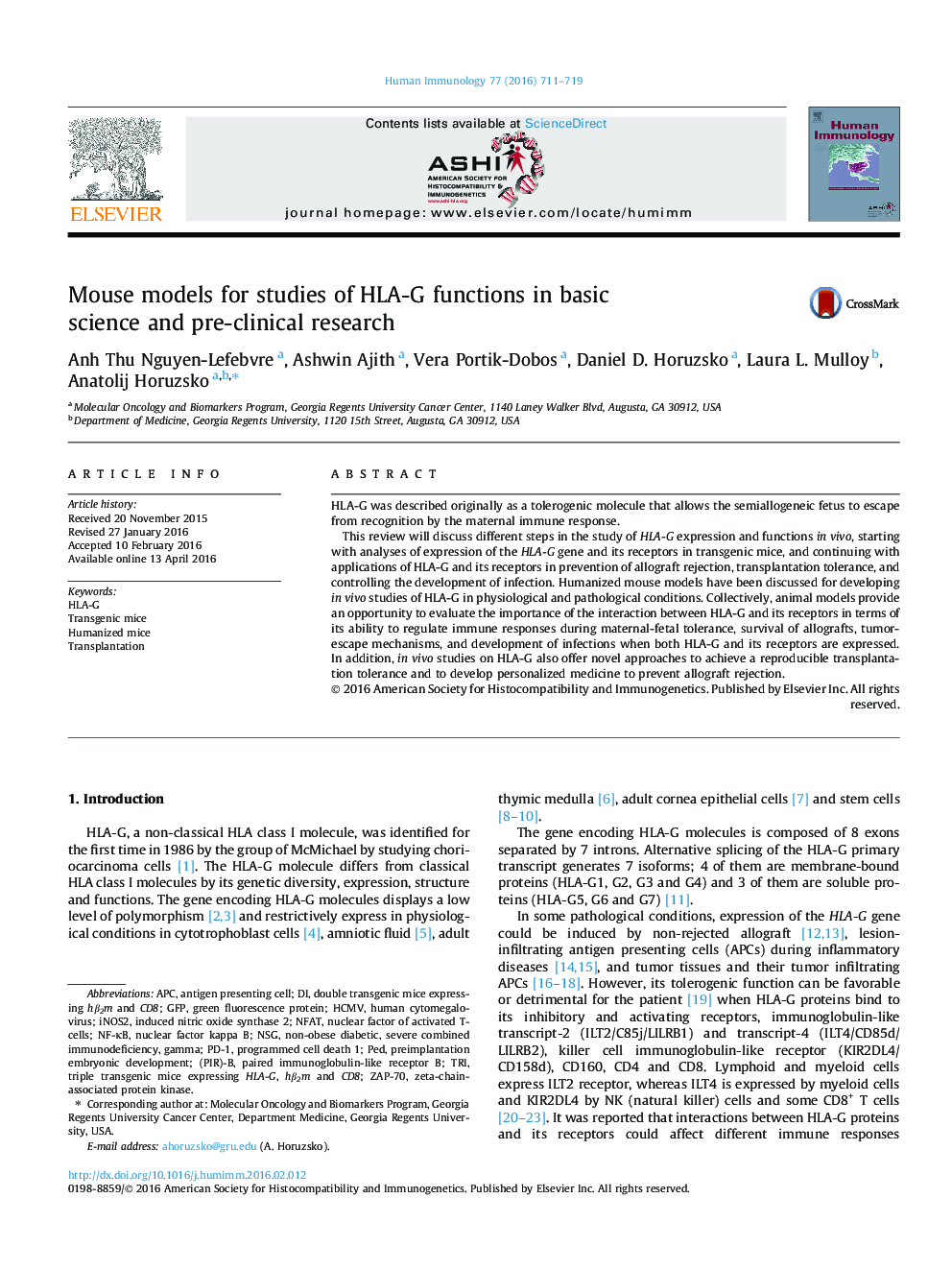| Article ID | Journal | Published Year | Pages | File Type |
|---|---|---|---|---|
| 3349472 | Human Immunology | 2016 | 9 Pages |
HLA-G was described originally as a tolerogenic molecule that allows the semiallogeneic fetus to escape from recognition by the maternal immune response.This review will discuss different steps in the study of HLA-G expression and functions in vivo, starting with analyses of expression of the HLA-G gene and its receptors in transgenic mice, and continuing with applications of HLA-G and its receptors in prevention of allograft rejection, transplantation tolerance, and controlling the development of infection. Humanized mouse models have been discussed for developing in vivo studies of HLA-G in physiological and pathological conditions. Collectively, animal models provide an opportunity to evaluate the importance of the interaction between HLA-G and its receptors in terms of its ability to regulate immune responses during maternal-fetal tolerance, survival of allografts, tumor-escape mechanisms, and development of infections when both HLA-G and its receptors are expressed. In addition, in vivo studies on HLA-G also offer novel approaches to achieve a reproducible transplantation tolerance and to develop personalized medicine to prevent allograft rejection.
